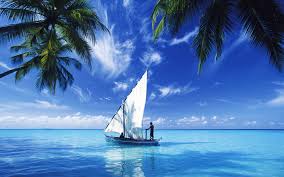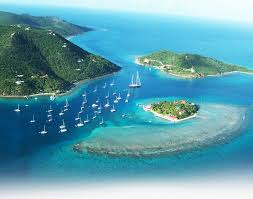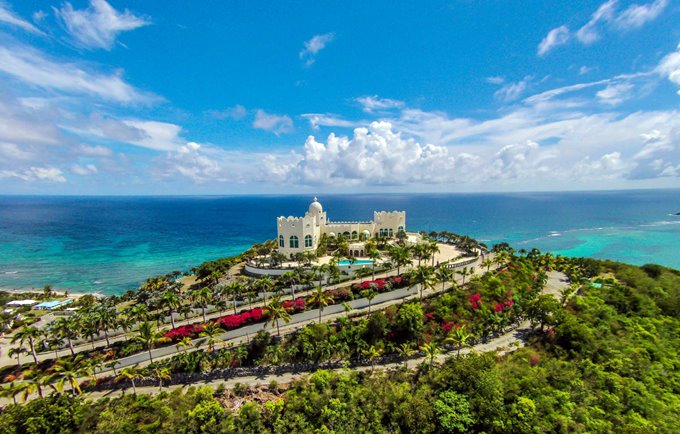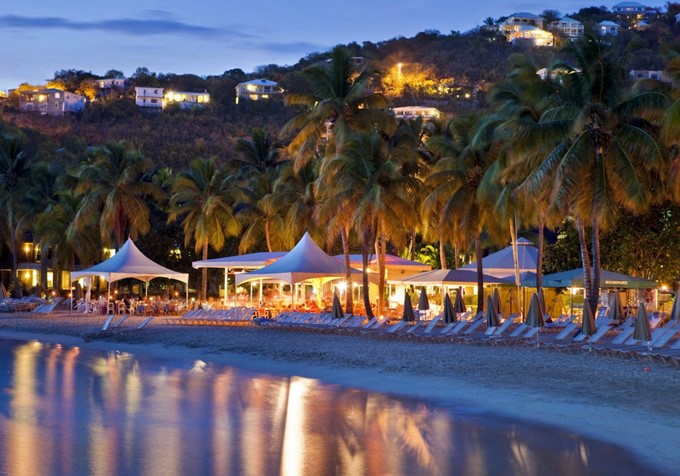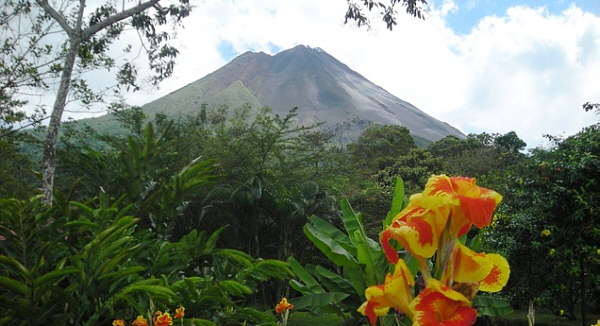CARIBBEAN: “TRUE PARADISE ON THE EARTH”
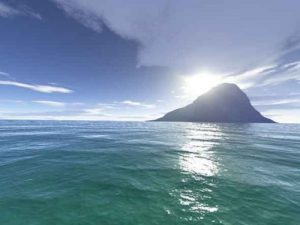 The Caribbean (Spanish Mar Caribe; English Caribbean Sea) – one of the most beautiful tropical seas, part of the Atlantic Ocean. The marginal semi-enclosed sea is bounded by Central and South America from the south and west, and by the Antilles from the east and north (thanks to which the sea has a second name – Antilles).
The Caribbean (Spanish Mar Caribe; English Caribbean Sea) – one of the most beautiful tropical seas, part of the Atlantic Ocean. The marginal semi-enclosed sea is bounded by Central and South America from the south and west, and by the Antilles from the east and north (thanks to which the sea has a second name – Antilles).
In the north-west, the sea through the Yucatan Strait (Spanish Yucatán Channel) communicates with the Gulf of Mexico; through many inter-island straits – with the Atlantic Ocean; and in the southwest, through the artificially constructed 80 kilometer waterway (Panama Canal) – with the waters of the Pacific Ocean. The region where the Caribbean Sea is located is known as the Caribbean. The coasts of the following countries are washed by sea waters: in the south – Colombia, Venezuela and Panama; in the west – Costa Rica, Nicaragua, Honduras, Guatemala, Belize and Yucatan (Mexican Peninsula); in the north – Haiti, Cuba, Puerto Rico and Jamaica; in the east – the countries of the Lesser Antilles. The area of the sea mirror is about 2 753 thousand km², the average volume of water is about 6860 thousand km³.
The sea is considered to be very deep: its average depth is 2.5 thousand meters, the maximum – 7.7 thousand meters (“Cayman Basin”). The color of sea water: from turquoise (bluish-green) to saturated green.
The Caribbean Sea is of great economic and strategic importance, first of all, as the shortest sea route connecting American ports with the ports of the Atlantic and Pacific Oceans through one of the largest construction projects carried out by mankind, the Panama Canal (Spanish del Canal de Panama). The most important ports located on the Caribbean: Maracaibo and La Guaira (Venezuela); Cartagena (Colombia); Lemon (Costa Rica); Santo Domingo (Dominican Republic); Colon (Panama); Santiago de Cuba (Cuba) and others.
CLIMATE
Caribbean Sea Climate formation in the Caribbean is influenced by warm ocean currents and the solar activity of this tropical zone. The average annual temperature of the surface layers of sea water is + 26 ° C. The Caribbean Sea receives the waters of many rivers, among which it should be noted Magdalena (Spanish) Madrata, Atrato (Spanish), Belem (Spanish Belém), Dike (Spanish Dique), Cricamola (Spanish Kramola) and others.
The main nuisance, which often violates the idyll of these fabulous places, are destructive storms. The Caribbean is considered the site with the most storms in the Western Hemisphere.
Terrible in strength hurricanes are a serious problem for island and coastal residents. Hurricanes also cause great damage to numerous coral formations – atolls, reefs, coastal margins of islands. From June to November, an average of 8–9 tropical hurricanes per year occur in the northern Caribbean.
CIRCLE OF PIRATES (ISLANDS OF THE CARIBBEAN SEA)
The sea got its name from a tribe of Caribbean Indians who lived on its warm coast in the pre-Columbian era. The sea is famous for its amazing beauty of coral reefs, frequent tropical cyclones, which are accompanied by crushing hurricanes, and pirates, who from ancient times chose it as the field of their “fishing activity”.
The coastline of the sea along its entire length is extremely indented: there are numerous lagoons, bays, bays, capes. The coastal soil in places is sandy, sandy-silty or rocky.
The coast in many places is covered with coral, amazing white sand.
Among the large bays, it should be noted Honduras (Spanish Golfo de Honduras), Venezuelan (Spanish Golfo de Venezuela), Mosquitos (Spanish Golfo de los Mosquitos), Ana Maria (Spanish Golfo de Maria Maria), Batabano (Spanish Golfo de Batabano), Gonave (Spanish: Golfo de Gonave).
The Caribbean is very rich in islands. The general group of Caribbean islands is united under the name Antilles archipelago (Spanish Antillas archipelago) or West Indies (Spanish West India archipelago). The archipelago is divided into island groups: the Greater Antilles and the Lesser Antilles (Netherlands), and the Bahamas (Spanish: Bahamas).
The Greater Antilles, which are mainly of mainland origin, located in the northern part of the sea, include such large islands as Cuba, Haiti, Jamaica and Puerto Rico. The Lesser Antilles (subdivided according to the location to the northeast trade wind by the Windward and Leeward) are mainly of volcanic or coral origin.
Among the many small islands of this group, the following can be distinguished: the famous Bahamas; distinctive Turks and Caicos Islands; Virgin Islands, divided between the USA and Great Britain; exotic Antigua and Barbuda; discovered by the omnipresent Christopher of Guadeloupe; the island of Martinique (Fr. Martinique), known as the birthplace of Josephine Beauharnais (Fr. Joséphine de Beauharnais), the first wife of Napoleon I; as well as Grenada, Barbados, Trinidad and Tobago; and finally, Dominica – the largest of the Windward Islands. Perhaps it is necessary to mention the island of Curacao, which “gave” its name to a popular liquor.
